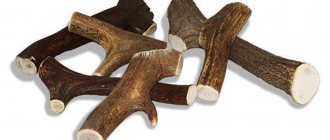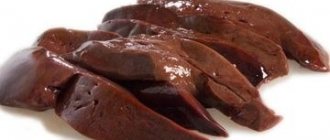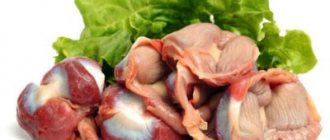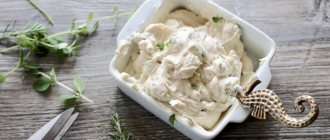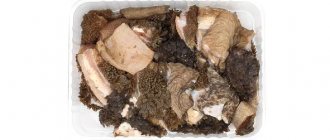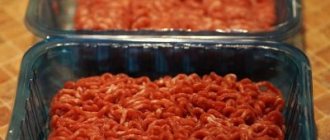Perhaps some dog owners do not consider kefir to be the most important product in the diet of their pets. After all, they can easily get protein and other useful substances from meat or specialized feed.
But it is not so. The fermented milk drink improves the functioning of the gastrointestinal tract, has a positive effect on the condition of the animal’s skin and coat, strengthens the immune system and eliminates dysbacteriosis. Therefore, it is important for every owner to know what kind of kefir can be given, how often and in what quantity.
What is this?
Kefir is a pleasant-tasting fermented milk drink obtained by fermenting cow's milk using kefir “fungi”. It contains calcium, potassium, magnesium, vitamin A, Omega-3 and Omega-6 fatty acids , which together are vital for both children and adults. The lactic acid product improves the functioning of the gastrointestinal tract and has a beneficial effect on vision and skin condition.
LiveInternetLiveInternet
Feeding regimen (Natural feeding)
Quality, quantity and time are the three pillars on which feeding rests.
The dog should be fed from a stand, adjusting its height as it grows. Fresh (filtered or boiled) water in a special container should be placed in a certain place on the stand. If the dog does not immediately eat the food, it must be removed after 15-20 minutes. Food should not be hot or cold. The optimal food temperature should be slightly above room temperature. Feed concentration may vary. An adult dog should be fed 20-30 minutes after a walk, or 2-3 hours before. Never force feed your dog! The consistency is thick sour cream. The dog should not know the taste of smoked meats, sweets, fried, salty and fatty foods.
Don't raise your puppy to be a beggar, don't give him scraps from the table. Dogs essentially have to regulate the amount of food they eat themselves. Therefore, the owner himself must regulate the amount of food depending on the age, season of the year, and the dog’s load. Food should be concentrated (nutritious), not bulky. The cause of excess weight may be excessive feed consumption caused by loss of self-regulation, feeding high-calorie, fat-rich foods, or increasing the portion of feed. In dogs, excessive fat deposits or the other extreme, when the bones are covered with skin, are unacceptable. In a normally well-fed dog, when lightly pressing on the sides, the ribs should be palpable. The diet of a Yorkie puppy (and an adult dog) must contain animal products in certain proportions: 75% - products of animal origin, 25% - products of plant origin.
The puppy must be taught to eat what he should get, and not what he likes.
Overfeeding not only leads to excessive obesity with the ensuing consequences, but also accelerates the growth rate of the puppy, which often causes problems associated with bone development. Avoid overeating to ensure your puppy's optimal growth rate. Feeding puppies At first, it is necessary to follow the breeder's recommendations, i.e. continue to feed the way the puppy was accustomed to eat from the first weeks of life. 2 -4 months.
Feeding 4 – 5 times a day.
The puppy's rapid growth and feeding should be complete and high-calorie, containing vitamins and minerals. The puppy should receive - 1) boiled meat with rice, 2) 2 - 3 times a week eggs, 3) from this age they begin to give boiled sea fish 2 times a week. 4) Fermented milk products, 5) give vegetables and fruits daily. 6) From porridge - rice and buckwheat. 4-6 months.
Feeding 3 times a day.
This period of life is still stressful. The puppy continues to grow, teeth change, the coat matures, this is one of the periods of puberty. The physiological and psychological stress on a puppy is enormous and you should be very attentive to your pet. 6-9 months
.
Up to 9 months, try to feed 3 times a day. Nutrition during this period is not much different from the previous one. The puppy should still receive the same set of foods. By this period, the main growth of the puppy has been completed, the teeth have been replaced, however, the formation of the skeleton and muscles has not yet been completed and occurs precisely during this period of the animal’s development. High-quality meat in sufficient quantities will significantly contribute to this. 9-12 months.
Feeding - 2 times a day.
Food should be complete and varied. During this period, the puppy is still forming. It is better to feed your YORK 2 times a day - morning and evening.
The dog must have 1) at least 5 times a week meat or other natural meat products,
but not sausages;
2) 2 times a week - fish;
3) 1-2 times - eggs, 4) every day - vegetables in a variety of forms, fertilizing, 5) porridge, rice and buckwheat. meat
(beef, chicken breasts) with rice.
Completely exclude pork and lamb from your diet! An egg
can be given 1-2 times a week, finely chopped, or soft-boiled mixed with the main food.
vegetables
, raw, finely chopped (and grated smaller for puppies) and always with vegetable oil (1 teaspoon).
It is good - if possible - to give crushed tomatoes without peels or tomato juice without salt (1 teaspoon every other day), adding them to food. Fish
can only be given from the sea, without small bones and only boiled (hake, cod, sea bass, Argentina, navaga, etc.).
Never give pollock!
The fish is finely chopped and can be mixed with a side dish (rice, buckwheat, vegetables).
Dairy products.
From dairy products it is better to give kefir, fermented baked milk, bifidok, cottage cheese, which
are not fatty.
You can give calcined cottage cheese and make it yourself.
Boil 1 liter of milk or kefir, then pour in 2 tablespoons of calcium chloride and let simmer for 2-3 minutes until completely curdled. Then cool and place in a sieve or strain through cheesecloth. The resulting whey can also be given by adding cottage cheese to porridge. This cottage cheese is absorbed by the body by 97%, and along with it calcium, which the puppy needs for growth and bone formation. Vitamins are given to the puppy starting from two months, adding it to food daily (the amount depends on the type of feeding and the age of the puppy). Some brief instructions about Yorkshire Terrier food: 1
.
The first meal in the morning should be liquid. 2
.
Alternate meat dishes with dairy dishes. 3
.
It is useful to make one feeding vegetable. 4
.
Starting from 3-4 months, for the period of teeth change. Eliminate all solids. 5.
Improper nutrition leads to various diseases and shortens the dog’s life. Provide your dog with eating and drinking dishes intended only for him, as the puppy must be taught that he can only eat from his own dishes and is prohibited from eating from someone else's. The dishes must be stable enough so that the dog cannot knock them over or drag them in his teeth. The dishes are placed on a special stand. The dog should always have water. Bowls for food and water should be nearby.
| When feeding natural products (natural food), your pet's diet should be varied but balanced. It must include all the necessary components. Such as meat, eggs, milk, cottage cheese, carbohydrates (porridge, vegetables, bran). Fats, minerals and vitamins should also be included. Food should be slightly above room temperature. Products from the refrigerator should be heated to 26 degrees, hot ones from the stove should be cooled to 39 degrees. Meat: Beef, chicken. Meat can be replaced from time to time with other products: hearts, lungs, liver Bird: Chicken meat should be heat treated (boiled) and separated from bones and skin. Chicken hearts remove excess fat. Goose and duck should be strictly excluded from the diet! Liver can be given no more than once every 14 days. Eggs: Raw yolk is given along with vegetables, porridge, and meat. Boiled eggs can be given in limited quantities. Raw protein should not be given! It is better to give yoghurts and kefir. Cottage cheese can be flavored with egg yolk, add sprouted wheat grains, ground in a meat grinder. Homemade cottage cheese: Mix 1 liter of kefir and 1 liter of milk, let it sour, and put it on cheesecloth. Plant food: Vegetables, cereals, and herbs must be included in your pet’s diet. Cereals: buckwheat, rice When raising a puppy on natural products, vitamin and mineral supplements must be included in the daily portion (in strict accordance with the instructions). Water Clean, fresh, unboiled water (filtered or bottled water) should always be freely available. Drinking boiled water can affect the condition of the animal's teeth. A feeding disorder also becomes a serious problem when the dog owner adds “a little meat” or “liver” to dry or canned food that is sufficiently balanced in nutrients. 'sour cream', 'chicken', etc. The result is often serious dysfunction of the liver, pancreas and other organs. There are a number of foods that should not be given to dogs: 1. All kinds sweets, pastries, cakes, chocolate, lump sugar etc., 2. Large amounts of salt - poison for dogs, 3. Do not give raw legumes and cereals, 4. Protein eggs, maybe yolk - only quail eggs, 5. Fresh bread, 6. Pasta7. Spicy bones and game bones, 8. Raw river fish, 9. Cabbage, 10. Juiceand, 11. Do not feed to dogs pork, fatty cheeses, sausages, ham, sausage, potatoes, citrus fruits. Feeding in winter Caring owners often believe that their pets need increased nutrition during the cold season. However, this is absolutely not true. An “apartment” dog, regardless of its breed and size, hardly needs a change in diet, unless indicated by a veterinarian. It’s a different matter for dogs that are constantly kept on the street, in an enclosure or on a chain. In cold weather, they really need an increase in calorie intake by about 25% if the dog just lives outside, and even more (up to 50%) if it does some kind of work. When creating your own diet, you need to remember the importance of nutrients - vitamins and minerals - in the diet. CARBOHYDRATES - Serve primarily as a source of energy, but can be converted into fats and stored in the body or used as a starting material for the creation of other compounds. FATS are necessary because they represent a concentrated source of energy and create the specific structure and aroma of food. PROTEINS – are necessary for dogs as a source of amino acids for the creation, restoration and replacement of body tissues. SO: You should absolutely not give your Yorkie the following foods: game bones and other sharp bones, non-white meat, pork, sausage, frankfurters, ham, fatty cheeses, pasta, sweets, fresh bread, raw fish, cabbage, legumes, turnips, pies, cakes. , ice cream, broths, juices, chicken eggs. You should not overuse potatoes, cereals and citrus fruits; an adult dog does not need milk. Do not overfeed your dog when feeding natural products. For every 500 g of dog weight, 1 level tablespoon of food is enough. When using ready-made food, follow the instructions on the packaging. |
| A LITTLE ABOUT FOOD. FEEDING YORKIES. 10 main mistakes when it comes to feeding dogs Special nutritionists and veterinarians have been successfully solving the problems of feeding pets for a long time. Special foods have been developed with vitamins and many other very useful and vital components that our four-legged friends need. All the main issues in this area have long been scientifically substantiated and practically tested. And yet we make mistakes when feeding not only puppies, but also adult dogs. 1. OUR MISTAKES ARE THEIR UNHEALTH. Most often, our mistakes are caused by ignorance of feeding requirements and daily ration norms for the normal development of the animal, as well as non-compliance with the feeding regime and, as a rule, overfeeding the dog. The main and most terrible evil that we do out of the goodness of our hearts is feeding dogs with foods that we consider tasty for ourselves, people. We give more sugar and salt than needed, even cervelat and salami. Does a dog need it? If you decide to kill your puppy, then believe me, you are on the right track. And the most harmful thing for a puppy is bones. You should not give bones to your baby until his dental system has formed, or it is better not to give him bones at all - this way the baby will not be able to damage himself with the sharp edge. 2. PHYSICAL ACTIVITY AND FEEDING RATION. FULL OR HUNGRY? The most basic rule that a dog owner should know is that the daily feeding rate is directly dependent on the amount of physical activity that the dog has spent during this time. With increased loads, the volume of food increases slightly, and with reduced loads (the dog rests or sleeps more, walks less) it decreases slightly compared to the usual daily diet. The main indicator of proper feeding is the dog’s normal fatness with well-developed muscles. If your pet is healthy and is not characterized by increased activity towards food (greed), which is quite rare, then he calmly moves away from his empty bowl. If the dog continues to lick (“chase”) the bowl (maybe even bring it to you), it means he didn’t have enough food. You always need to remember: An adult dog is fed twice a day: morning and evening. The bowl is removed 10-15 minutes after the start of feeding, regardless of whether it is empty or full. Fresh drinking water should be available at all times, especially when feeding dry food. 3. THIN OR FAT? If your dog is losing weight, the total amount of food may need to be increased slightly after consulting with your veterinarian about his health. The normal condition of a dog is checked as follows. In the place where the dog's croup begins, the croup should be easily palpable, but not visually prominent. Otherwise, the dog will develop excess fat. Obesity leads to heart problems and shortens your pet's life. Remember: we and only we ourselves either prolong or shorten their life. Consult a dog trainer and, if your dog is healthy but doesn’t move much, take him for a walk. It’s not for nothing that dogs take us for walks. Look how they run and play! And they take care of their figure and do exercises, and we? 4. MINERAL SUBSTANCES AND MINERAL FEEDINGS. WHAT ARE THEY NEEDED FOR? Minerals are vital for both puppies and adult dogs. Bone meal, calcium, phytin, glycerophosphate, mineral supplements, which include all the necessary components, play an important role in the formation of the puppy’s bones. You need to know and remember that for each breed the amount of mineral supplements should be different. It is best to seek advice in any club from the head of your breed section. An overdose of mineral supplements for a puppy can lead to bone fragility, which will likely result in paw fractures. In an adult dog, excess mineral supplements are washed out of the body. 5. RAW FOOD. TO COOK OR NOT TO COOK? The dog should receive raw meat, vegetables (preferably vegetable salads), rolled oats, sea or ocean fish. River fish can be boiled. It is better to soak Hercules (but not cook!) or give it dry. If you are afraid that your dog will become infected with various microorganisms, then pour boiling water over or hold a piece of meat in it for 2-3 minutes before cutting it into pieces. Never give your dog a whole piece of meat! You should feed your dog meat only in the evening. An adult large dog under 5 years old should preferably receive a bone (except lamb bone), cartilage or ribs once a day. Overfeeding with bones causes gastric upsets. Strictly exclude bird bones! For dietary purposes, it is good to give boiled poultry meat. A little vegetable oil or sour cream (not mayonnaise) must be added to vegetable salads for better absorption of the “live” vitamins they contain. It is advisable to add fruits, washed nettle and dandelion leaves to salads. Under no circumstances should you collect nettles and dandelions near the road. 6. INTOLERABLE FOODS There are a number of foods that should not be given to your dog at all. All kinds of sweets: pastries, cakes, lump sugar, etc. cause watery eyes or suppuration of the eyes, and the normal functioning of the liver may be disrupted. A large amount of salt is poison for a dog (as well as for you and me). Therefore, the food needs to be added minimally. Any herbs, spices and aromatic substances, even those contained in ordinary cookies, can cause loss of smell, especially in hunting and working dogs. It is strictly forbidden to give lamb and pork, given that raw pork most often contains the canine distemper virus (Pestis canum). Both of these meats cause stomach upset. They are too hard on dogs' livers. Legumes and cereals should not be given raw, except for rolled oats. Dogs love raw potatoes, believe me: 1 potato in one or two days will not hurt. There are also problems with milk. Dogs' sensitivity to milk sugar (lactose) is very limited. Milk can be given to a puppy up to 4 months of age. Fermented milk products: kefir (except fruit), cottage cheese and cheese are well absorbed by the dog’s body. 7. SHOULD I FEED FROM THE TABLE? The most common mistake! As soon as a puppy appears in your home, he must understand that he will not be given anything from the owner’s table and must eat only from his own bowl. The beggar dog sits at the table all the time and looks at you with such eyes that a piece of food gets stuck in his throat. And when there are guests in the house... There will definitely be a kind soul who will give you something tasty according to their own human understanding. So decide whether to teach your puppy to beg. Feeding him correctly and in a timely manner is the most important thing. Of course, sometimes you can spoil yourself, for example, on your birthday! 8. HOW MANY TIMES A DAY SHOULD I FEED A DOG? Puppies eat very often. Immediately after birth, blind and helpless, they poke into their mother's belly, looking for the precious nipple with colostrum. Up to two months, puppies are fed 5-6 times a day, from two to four months - 4 times: from four to seven, like young dogs - 3-4 times. Adult dogs are fed 2 times a day - morning and evening, and in hot weather - 1 time, old dogs - 2-3 times a day. Sometimes a dog may refuse food throughout the day. If you are sure that your pet is healthy, then there is no need to panic. Your dog just had a fasting day! And he's right... 9. SHARP CHANGE OF FOOD Before switching from one food to another, think about whether your dog needs it. If you decide that a change of food is needed, then consult your dog handler. He will tell you which food to choose and help control a painless transition from one type to another. When consuming dry ready-made food, you must strictly follow the manufacturer's recommendations so as not to cause digestive problems for your dog. You need to be especially careful during the first 5-7 days. No other products can be added to such foods (for example, Pedigree Pal): they already contain everything necessary for proper feeding of your dog. Remember that it is important not to overfeed your dog, especially in the first days of giving a new food. Always make sure your dog has fresh drinking water available. The dog must drink plenty! 10. UNPURPOSE ADDITIVES OF ADDITIONAL DRUGS When using special balanced feeds, there is no need to add mineral supplements or vitamins. They do not improve the dog's health. Moreover, an overdose of vitamins can lead to serious consequences, and your best intentions will turn into tragedy. Please do not experiment on your own pet! You can always turn to a veterinarian for advice or to any club, to a dog handler - the head of the section. Be attentive to the norms and feeding regime of your dogs, to their well-being. Don’t be lazy to consult with experts. Learn to understand your dog. Then your pet will be healthy and happy. Not every owner can competently prepare a diet for a pet - so four-legged animals suffer from itching and stomach upset. Dogs don’t need a varied menu, otherwise in a week she will turn her nose up at meat: I ate this yesterday; will turn away from the fish: I’m tired of something, and if I’m still being capricious, maybe the owner will turn to something else tasty? When feeding natural food, vitamins must be added to the dog’s diet (some of them may cause allergies). Natural food is vegetables (it is better if they are cooked in a Zepter-type container - to preserve microelements and vitamins), fish poached without salt, meat: beef and horse meat, but not veal, boiled rice and buckwheat. Especially for veterinarians, veterinarians have prepared several useful facts about common products that we gleaned from various “dog” sites. Chicken in large quantities and constant consumption is harmful to the coat , in addition, Yorkies are often allergic to chicken. Birds on our farms have long been raised using Western technologies. Do you know how? From the first day of life, antibiotics, stimulants of growth and mass hormones, or the hormones themselves are added to the chicken’s feed. As a result, within a month the bird weighs 2 kg and is ready for slaughter. Naturally, some of the hormones remain in the meat that both people and animals eat. And if you feed your animal chicken constantly, you will soon notice symptoms of ill health. This may include dry fur, dandruff, itching, redness and hardening of the skin (dermatitis). Floppy-eared dogs (especially poodles and spaniels) can experience severe itchy ears. Pork destroys the liver. Forget about this meat altogether. Firstly, it is so fatty that it destroys the liver of dogs and cats. Even if you cut off all the fat, the fat remains between the fibers of the meat. Secondly, raw pig meat can contain quite a lot of pathogens (which, however, die during heat treatment). Thirdly, pork is a powerful allergen; it can cause itchy skin and stomach upset. Fish destroys vitamins. An excellent product for feeding dogs, but the owner must understand what kind of fish to buy. The fact is that raw fish has an unpleasant property - it contains substances that destroy B vitamins (these vitamins are responsible for the condition of hair, skin and the functioning of internal organs). So, all freshwater fish and some sea fish (capelin, herring, herring, sardinella) destroy vitamins especially strongly. And some types of fish also prevent the body from absorbing iron and can even lead the animal to anemia. These are pollock, haddock and blue whiting . But mackerel, flounder and cod can be given to balls without fear . But it’s better not to feed cats fish at all - it causes kidney stones. By-products are the best delicacy. They are very useful for murkas and pellets, especially the stomach (offal), but not as the main food, but as an additive to food. They contain enzymes, vitamins, iodine, iron, digestive enzymes, etc. It is not for nothing that in the wild, a predator first eats the entrails of the victim, and leaves the meat for later. There is an exception - do not feed the animal kidneys , especially raw ones, they are harmful to the liver. By the way, dried offal can be bought at pet stores and given as a treat. Vegetables and greens clean their teeth and stomach. Cats don’t need them at all; they even eat grass just to cleanse their stomach. Dogs often happily nibble carrots, apples, cabbage - but vegetables are not a vital necessity for them, but a delicacy or an element of play. Vitamins? A tiny piece of cod liver contains more vitamin A than a kilogram of carrots, and dogs produce vitamin C internally. Therefore, do not rub or cut vegetables - let the animal gnaw them for pleasure, and at the same time brush its teeth. When creating your own diet, you need to remember the importance of nutrients - vitamins and minerals - in the diet. CARBOHYDRATES - Serve primarily as a source of energy, but can be converted into fats and stored in the body or used as a starting material for the creation of other compounds. FATS are necessary because they represent a concentrated source of energy and create the specific structure and aroma of food. PROTEINS – are necessary for dogs as a source of amino acids for the creation, restoration and replacement of body tissues. There are a number of foods that should not be given to dogs: 1. All kinds of sweets, pastries, cakes, chocolate, lump sugar, etc., 2. Large amounts of salt or seasoning are poison for almost every dog, 3. Legumes and cereals should not be given raw, 4. Egg white (raw ), yolk is possible, but only quail eggs, 5. Fresh bread, 6. Pasta, 7. Potatoes, 8. Spicy bones and game bones, 9. Raw river fish, 10. Cabbage, 11. Concentrated juices. Source |
To be continued…
Series of messages “Our Little Brothers”:
Part 1 — Feeding the Yorkshire Terrier (article) Part 2 — How to cut a Yorkie Part 3 — How to feed a picky animal Part 4 — You can’t live without dogs! Part 5 - What to feed your Yorkie Part 6 - Caring for your Yorkie (haircut, grooming, ear cleaning, toilet)
Benefit
Kefir is beneficial for dogs to the same extent as for humans. The fermented milk drink improves the digestion and metabolism of your four-legged pet.
But you shouldn’t assume that kefir will replace all sources of calcium. Due to the limited content of vitamin D, most of the calcium is not absorbed and is excreted from the body naturally.
Important! If the basis of the dog’s diet is dry food, then kefir should not be given as a separate food - only mixed with food.
Cottage cheese, yogurt, fermented baked milk and other fermented milk products
Having figured out whether a dog can have kefir, the question arises regarding other fermented milk products. Which of them are recommended to be included in your pet’s diet and in what quantity? The answer will please, first of all, owners who prefer to keep their pupil on natural food. Dogs can be given absolutely all fermented milk products that do not contain sugar. Ryazhenka, yogurt, drinks “Bifidok”, “Acidophilin”, homemade or purchased yogurt without sugar and additives, whey - everything can be included in the menu of a four-legged pet.
However, you should remember some nuances. For example, fermented baked milk can cause fermentation and flatulence. Therefore, you should not get carried away with it. Store-bought yogurt containing sugar is also extremely undesirable, since, in addition to the sweetener, it also contains preservatives and other additives that may not be tolerated by the dog’s body.
You should also be careful when feeding your pet cheese, milk and sour cream. This is especially true for animals that suffer from a weak pancreas. Such fatty foods can cause diseases such as pancreatitis. This primarily applies to small dogs, whose weak pancreas is a common occurrence.
Harm and allergies
Both dog owners and veterinarians are convinced of the benefits of fermented milk product. However, in some adults the drink can cause gastrointestinal upset (loose stools or increased gas formation).
This is especially true for high-fat kefir. If the fat content of the product does not exceed 2-3%, there is nothing to worry about. If the animal’s health worsens (due to individual intolerance), kefir can be replaced with low-fat cottage cheese.
Like any other product, fermented milk drink can cause allergies in an animal . But this happens much less frequently than when eating more allergenic foods (fatty fish and meat, confectionery, smoked meats, etc.).
The first signs of an allergy may be the following symptoms:
- sneezing and coughing;
- diarrhea or vomiting;
- lacrimation;
- breathing problems;
- itchy rash on the body.
Attention! Often, some infectious diseases are mistaken for an allergic reaction (for example, when exposed to staphylococcal bacteria). Symptoms may be similar: lacrimation, itching, hair loss, etc.
Then the animal will need urgent veterinary care , while the owner will try to cure the pet for a non-existent allergy. An accurate diagnosis can be made by taking a blood test (test for sensitivity to fermented milk products).
What foods should you not feed your pug?
Under no circumstances should you feed your pet food from your table, as well as the following products:
- fatty meat (pork);
- raw egg whites;
- flour products (white bread, pasta);
- smoked meats, sausage, frankfurters;
- sugar and foods high in sugar (potatoes, ice cream, chocolate);
- butter and confectionery products;
- semi-finished products;
- sour cream, mayonnaise, cream.
You should not feed your dog spicy, fatty or salty foods.
For struvite
Among experts and dog breeders there is a dual opinion on this matter: some believe that it is not possible, others believe that it is possible, but in limited quantities.
The best solution in this situation would be the following : give kefir with 1% fat content and no more than 2 times a week. After which you need to take a urine test (after 1.5-2 weeks) to determine your health status. If your pet gets worse, the veterinarian will advise eliminating fermented milk drink from the diet.
The possibility of kefir appearing in the daily diet
The dog is a carnivore that prefers food primarily of animal origin for protein. The diet of pets contains meat and plant foods. Fermented milk drinks and products saturate bones with calcium. Therefore, it is recommended to give them daily. The following will help diversify your daily diet: cottage cheese, cream, unsalted cheeses, etc.
In what cases is it recommended to drink kefir:
- The puppy switches to a different diet;
- At first, give 1-2% kefir, otherwise stool upset may occur;
- As you grow older, the fat content of the product gradually increases.
Only an aging dog can be given a fermented milk product every day. In other cases that are not listed above, kefir is a preventive measure for regular constipation. Often, after an antibiotic course, the animal suffers from dysbiosis; it is allowed to give not only this drink, but also other milk.
How to give correctly?
It can be given either in its pure form (when eating natural food) or mixed with other products . If you feed your dog dry food, it must be mixed into the food (no more than 2 tablespoons per serving).
Kefir can be mixed with the following types of products:
- low-fat cottage cheese;
- unsalted varieties of cheese or feta cheese (for adult animals);
- a raw egg;
- rice and buckwheat porridge.
For adult pets add 1-6 tbsp. spoons, puppies - 1-2 teaspoons.
Thus, the taste of food noticeably improves and the dog eats food with pleasure, even if it was previously picky.
Portions and frequency
For small dogs, it is recommended to give kefir no more than 1 teaspoon 2 times a week . Large pets - up to 6 tablespoons 2-3 times a week. Every day (or every other day) the product can be given to aging dogs who are prone to constipation.
Water or milk kefir for dogs?
Milk kefir goes by several different names depending on the country you are in.
Milk kefir is undoubtedly the most popular and consumed kefir around the world. This may be due to its taste and texture, which is very similar to traditional yogurt. On the other hand, water kefir has a microflora almost identical to that of milk kefir, and its properties are very similar and equally beneficial.
The fundamental difference between water kefir and milk kefir is the nutrient medium where the microflora develops and carries out the natural fermentation process. Water kefir is dairy-free and is often made with water, fruit juice, or coconut water. Milk kefir, on the other hand, contains dairy and does not include additional flavorings.
Pregnant or nursing
Kefir is not only possible for pregnant and lactating dogs , but also necessary . After all, the body of a pregnant or lactating individual needs more nutrients, and fermented milk drink is a storehouse of calcium and phosphorus.
So, 0.5 liters of product contains protein, as does 100 g of raw meat. It can be given mixed with other foods (for example, cottage cheese or raw chicken yolk) or in its pure form.
The amount of consumption can be unlimited, but you should pay attention to the response of the animal’s body.
If the condition worsens, nausea, vomiting, diarrhea, the drink should be temporarily excluded from the diet or reduced to a minimum. Breastfeeding women tend to consume more than pregnant women.
Need for nutrients and vitamins
There can be two feeding options - dry mixtures or natural products. With the second method, the owner will have to put in a little more time and effort.
Knowing the daily requirement for minerals for a puppy and an adult pug (1 g of substance per 1 kg of weight) will help you understand what products should be present in a pug’s diet:
- carbohydrates – 10 and 6 g;
- proteins – 30 and 15 g;
- fats – 2.6 and 1.3 g;
- calcium – 0.5 g and 0.25 g;
- phosphorus, potassium – 0.4 g and 0.2 g;
- iron – 0.13 g for both puppies and adult dogs;
- magnesium – 0.02 g and 0.01 g.
Don't forget about vitamins. Vitamin A is responsible for the growth and development of organs, skeleton, and muscles. Necessary for pregnant and lactating dogs. Contained in greens (dill, spinach, parsley), fish oil and liver, egg yolks, milk, yellow, red and orange vegetables and fruits (apricots, pumpkin, tomatoes).
Vitamin B ensures healthy muscle development and normal appearance. Contained in liver, bran, greens, dried fruits, nuts, tomatoes, buckwheat.
Vitamin C strengthens the immune system, prevents the development of dental diseases, and ensures good functioning of the musculoskeletal system. Present in berries (currants), fruits, citrus fruits, sweet yellow and red peppers, broccoli and Brussels sprouts, and greens.
What to do if you feel sick from what you eat?
If your pet suddenly becomes ill after drinking a fermented milk drink (which happens in the rarest cases), you need to take the following actions :
- If the animal is vomiting, it is necessary to give as much clean water as possible (preferably purified, not from the tap) and wait until the stomach is completely cleansed. If your pet refuses to drink water, you should leave him alone - the digestive system will cleanse itself and the body will return to normal. If vomiting does not stop for a long time, you can give the dog an antiemetic drug - Cerucal, as well as Smecta (to calm the stomach).
- If your dog has profuse, ongoing diarrhea, he should be given the drug Regidron (dissolved in water) or given rice water to drink (boil a small amount of rice, remove the grounds, and use the resulting liquid for drinking).
- In some cases, if there is vomiting or diarrhea, you can give an enema of clean water in an amount of approximately 250-300 mg. You should also not feed the animal any food for 12 hours.
- If your pet experiences frequent bouts of vomiting or upset bowel movements, you should take him to the vet .
- If the animal exhibits weakness, refusal to eat, or characteristic signs of a possible allergy (itching, rash on the body, swollen tongue, lacrimation), it is necessary to submit appropriate tests to the veterinarian. clinic to find out the exact cause of such reactions.
Is there a ban on certain dog breeds?
There are no specific restrictions; first of all, you need to know about the individual characteristics of pets. If you just started drinking kefir, you may have loose stools. Reduce its consumption to a minimum, or add it to cottage cheese, porridge, or dilute with water. If you have an allergy, consult a veterinarian, he will indicate the exact dosage of lactic acid products, or limit their consumption. And so, almost all dogs benefit from fermented milk drinks, as noted earlier, it all depends on the individual characteristics of the animal’s body.
Other dairy products
In addition to kefir, dogs can also be given other dairy products:
- Cottage cheese with a fat content of no more than 9% in the amount of 1-6 tbsp. spoons, 2-3 times a week.
- Yogurt (low fat), starting at 3 months of age. An important condition is that the product is natural, without dyes or fat substitutes. Adults - 100 ml per day, puppies and small breeds - 1 teaspoon per day
- Cream (10% fat) - given to puppies after weaning from mother's milk. They are used to dilute porridge and give 1 teaspoon in its pure form.
- Cheese in the form of small cubes 1-2 times a week. The cheese should be low-fat and low in salt (Swiss, cheddar, etc.). Large dogs no more than 70 grams, small dogs - 28 g.
Attention! Pets should not be given processed, smoked or moldy cheese. It is also not recommended to give milk, sour cream, fermented baked milk and condensed milk.
Is kefir okay for puppies?
The nutrition of a small puppy in the first days of life consists of mother's milk. After some time, when the baby grows a little, fresh cottage cheese and kefir are usually used as the first complementary foods. Many dogs lose the enzymes that break down lactose as they get older. As a result, regular milk is poorly digestible by animals. Therefore, it is advisable to treat young dogs with kefir.
Is it possible to feed a dog this product at a young age? The answer is obvious. Once the pet reaches three to four months of age, the product becomes a complete part of the diet of young animals, along with meat. It can be given in a 50/50% ratio with meat. It is at this age that kefir has the most beneficial effect on the young growing body of a dog. When feeding a puppy with this product, you should take into account that the protein and calcium contained in it are best absorbed in the morning, while meat and vegetables are absorbed in the afternoon.
Kefir is necessary for a dog during puppyhood, when the bone foundation of the animal is laid. In addition, the product has a beneficial effect on the condition of teeth, fur and sense organs - vision and hearing.
When introducing kefir to your pet’s menu, you should take a low-fat product – no more than 1-2%. However, even zero fat content can harm the animal. As you get older, the fat content of kefir can be increased, while monitoring the general condition and reaction of your pet’s body.
What else should I feed?
As an alternative source of nutrients (calcium and protein), you can use foods such as:
- lean meat and sea fish (boiled);
- porridge (buckwheat, oatmeal, rice);
- vegetables and greens (kale, broccoli, pumpkin, green beans, spinach, parsley);
- fruits (bananas, apples, apricots, citrus fruits).
What foods can you feed your pug?
The daily menu should include:
- fermented milk products are the basis of the diet;
- lean raw meat (beef) and poultry;
- fish;
- raw bones (not tubular);
- low-fat cottage cheese;
- vegetable stew;
- fruits and dried fruits.
You can feed your dog rice (crushed), well-cooked porridge. Meat and fish should make up 2/3 of the total food. The serving size is calculated individually for each dog.
